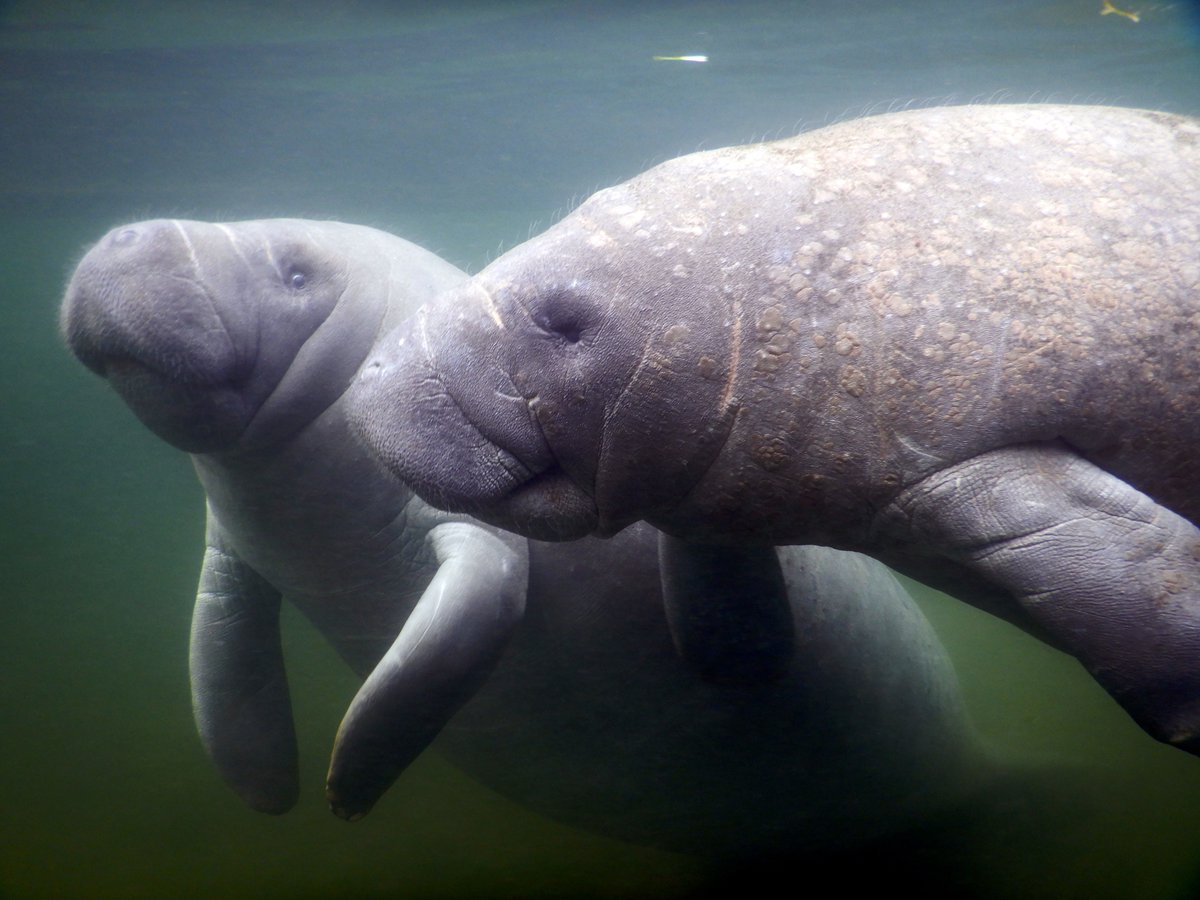12 Awesome Manatee Facts!
Two Florida Manatees, also known as West Indian Manatees are enjoying Florida’s warm waters
Greetings! Since manatee season is right around the corner, I thought I’d give you a quick rundown on 12 awesome manatee facts!
The manatee is the wonderful gentle giant of the ocean. And when I say giant, I mean giant! I’ll explain in just a minute. Now take a look at some of the cool and little-known facts about our unique species and others in the manatee family.
- Only 4 manatee species
Today there are four manatee species found in the world: the Amazonian Manatee (Trichechus inunguis), the West African Manatee (Trichechus senegalensis), the West Indian Manatee (Trichechus manatus), and the Dugong (Trichechus dugon). The Dugong is closely related to the manatee and they both come from the animal group Sirenia.
2.Bigger than you might think
Manatees can reach up to 13 feet long (depending on the species) and weigh up to 3,500 pounds. In rare instances, the Florida manatee can actually grow this large!
3. Plant eaters of the sea
Manatees are herbivores, and their diet is made up of plant matter. One of their favorite things to eat is seagrass.
4. Moo-na-tee!
The sea cow is also a name for a manatee because both the cow and the manatee are large and are herbivores.
5. Copious chompers
Manatees have four rows of teeth (all molars), which include about 24 to 32 teeth total. They lose and replace these teeth often because the sand wears them down as they eat plants. When lose their front teeth, the teeth in the back move forward and replace them. This is known as “marching molars!”
6. Lots of family time for Mom and Calf
Mother manatees are pregnant for about a year. Once the calf is born directly into the water — it takes approximately two years for it to be on his or her own.
7. Never really in a rush
The majority of the time, manatees only move at 2 to 5 miles per hour. However, they can reach up to 20 miles per hour if needed.
8. Over a century of protection
Officials have been trying to protect manatees for a long time. The first laws to protect them in the United States were passed in 1893 in Florida. At one time, there were only about 1,000 Florida manatees alive, but now there are more than 6,000! Conservation efforts are helping, however more needs to be done to save the manatee.
9. Lengthy lungs
The lungs of a manatee can stretch almost the entire length of their body. And a manatee can replace 90 percent of the air in its lungs as compared to a human who can replace only 10 percent.
10. Manatee love warm springs
Since manatees are warm-blooded and need water temperatures of at least 68 degrees Fahrenheit, during winter and when water temperatures are cooler, manatees will gather in groups as they seek out warm-water sources. These warm-water spots are typically warm-water discharges from power plants and natural springs.
11. Any type of water will do just fine
Manatees are often found in shallow water and it is very common for them to move between fresh water and salt water.
12. Algae can grow on Manatees
Manatees surface every 5 minutes for air. And for those manatees that enjoy swimming near the surface, they can be seen with a good amount of algae growing on their backs because of their exposure to strong sunlight.
If you see any sick or injured manatees, please call the Florida Fish and Wildlife Conservation Commission at: 1-888-404-FWCC. They are the folks who are responsible for rescuing us in Florida.
Here’s the Save the Manatee Club link to learn more about us manatees …
Here’s a cool link for you to learn more about how we’re rescued and brought into rehabilitation …
~ Kobee Manatee
